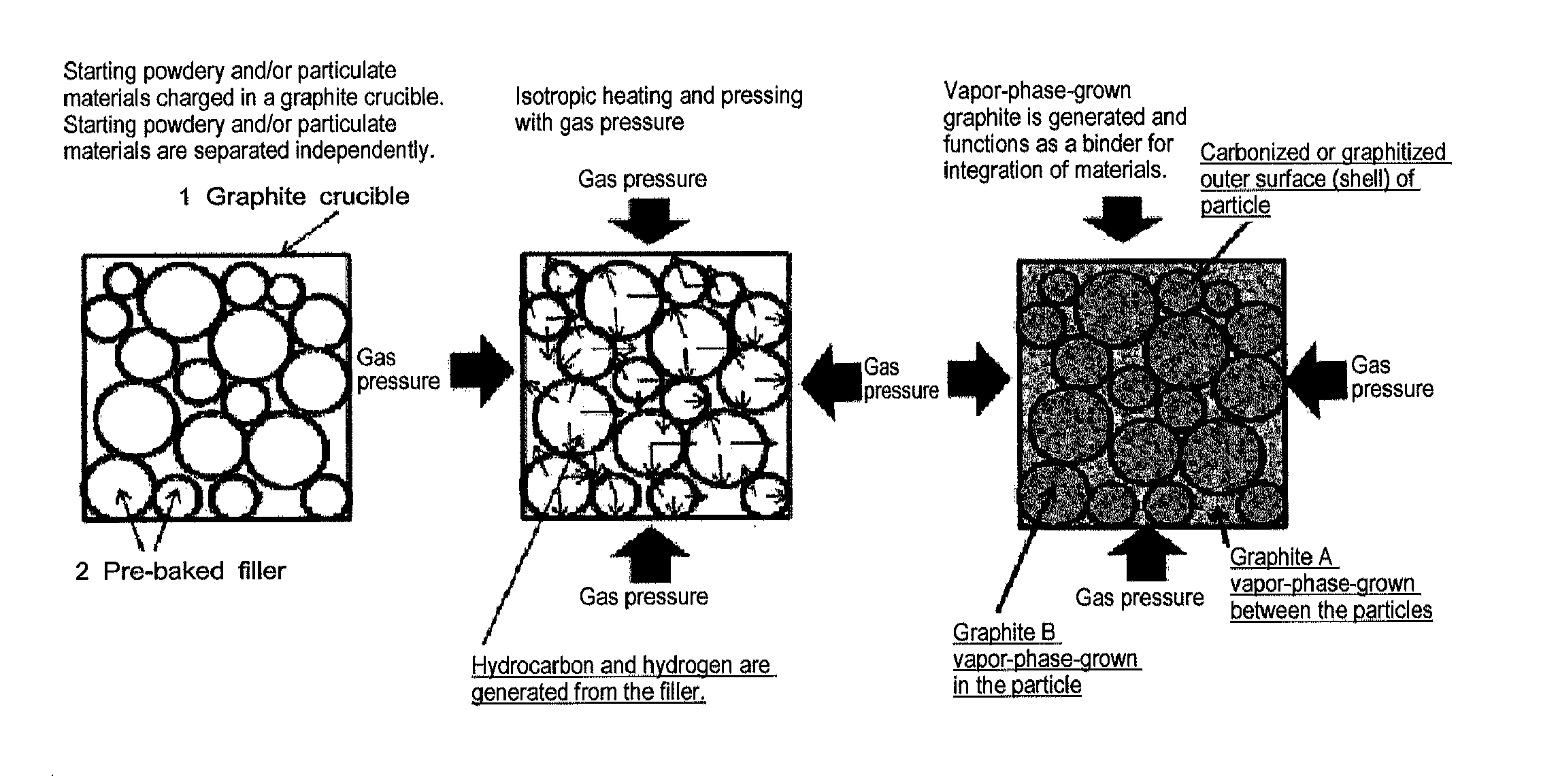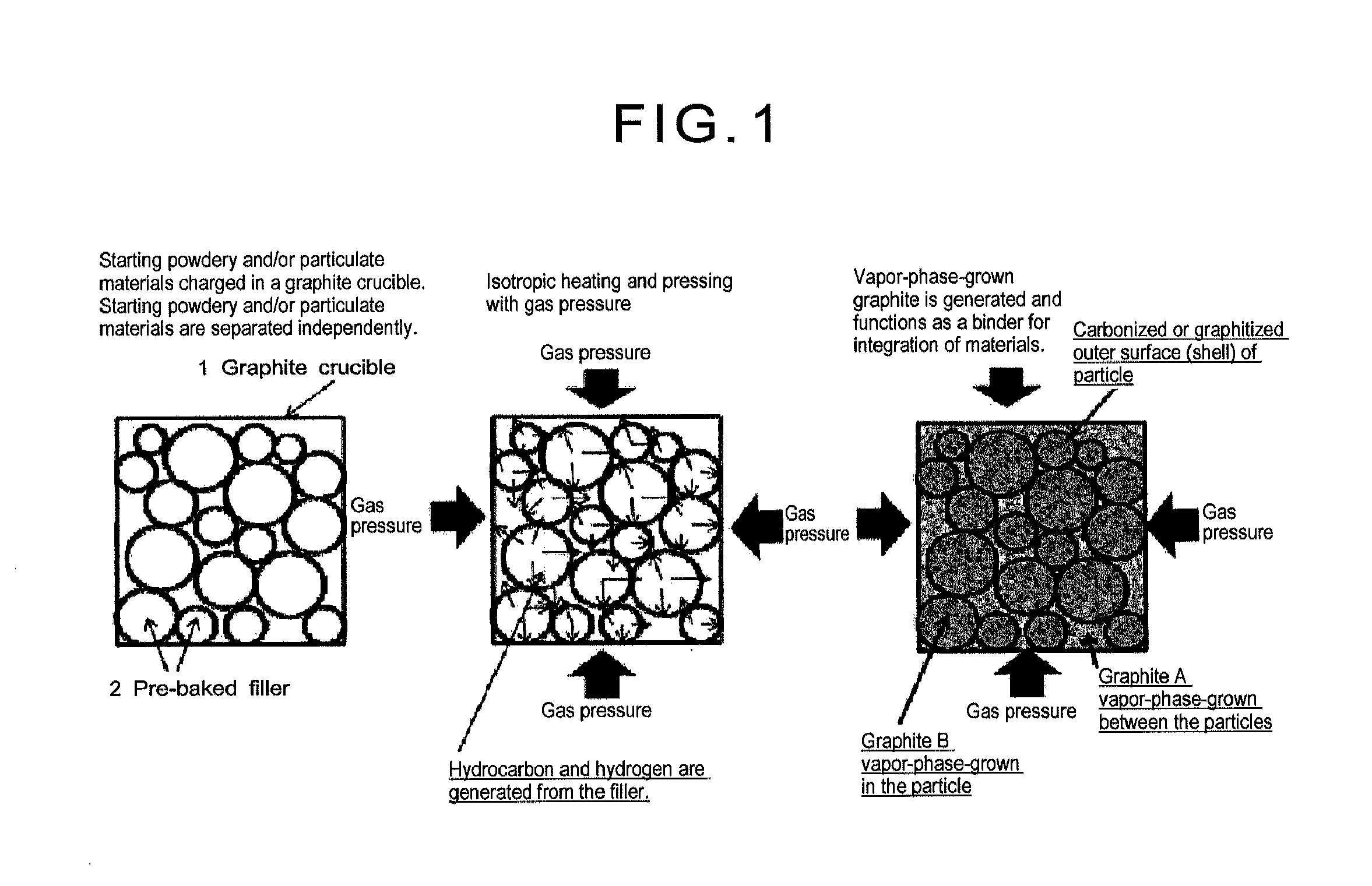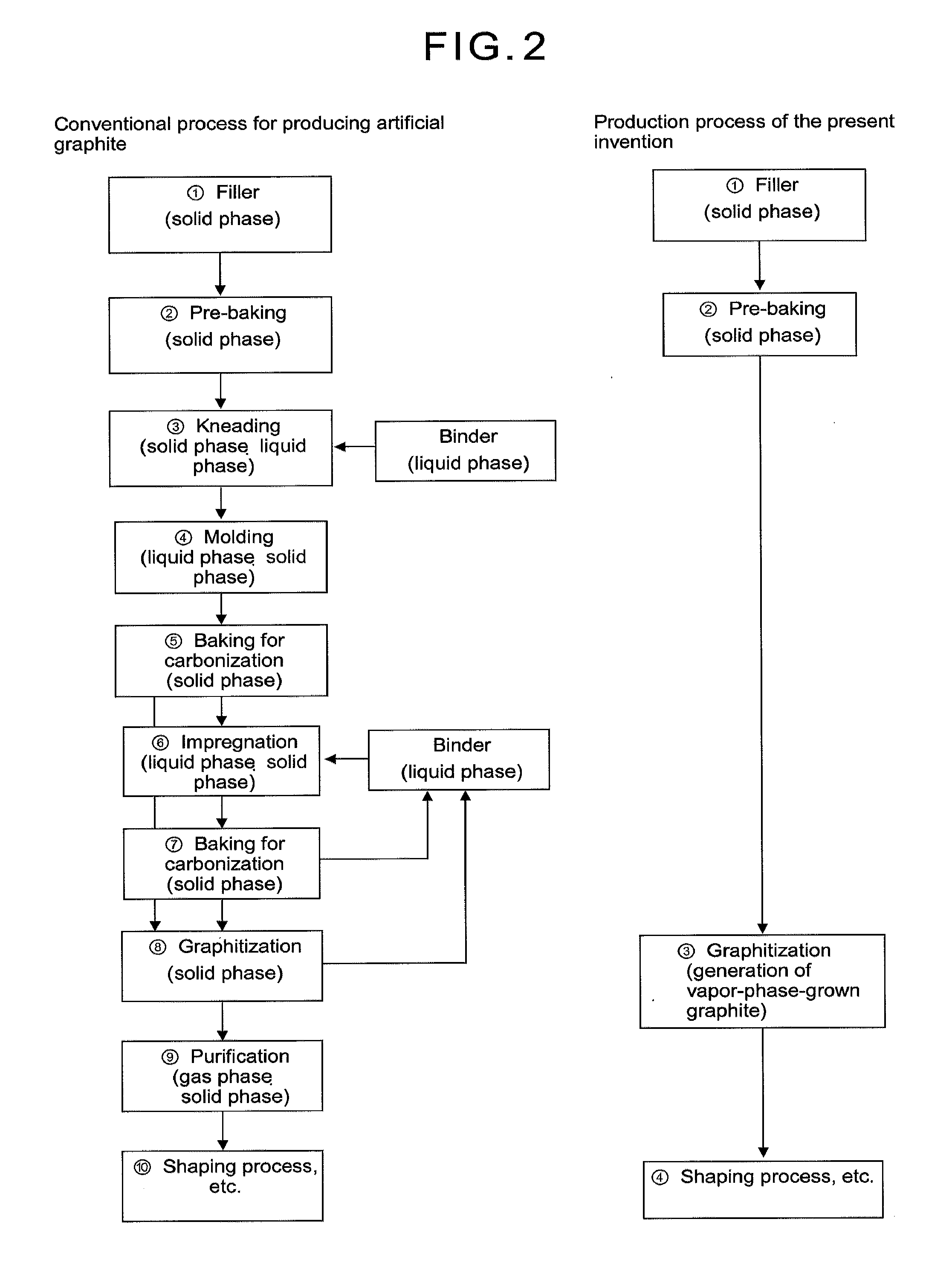Carbon material and method for producing same
a carbon material and carbon technology, applied in the field of new structure and production, can solve the problems of large form, low hardness and hardness of graphite as compared with those of metallic materials, and relatively easy slippage, and achieve the effects of reducing cost, simple process, and greatly enhancing productivity
- Summary
- Abstract
- Description
- Claims
- Application Information
AI Technical Summary
Benefits of technology
Problems solved by technology
Method used
Image
Examples
example 1
[0220]Phenol formaldehyde resin powder having an average particle size of 20 μm was pre-baked at 750° C. in an inert gas atmosphere. The amount of hydrogen contained in the starting material after the pre-baking was 0.8% by weight. The pre-baked starting material powder was charged in a graphite crucible and a screw type top cover was closed to seal the crucible. FIG. 8 is an electron microscope photograph of the starting material after the pre-baking, and at this stage, the starting material exhibits forms of thermosetting resin and hard carbon (hardly graphitizable carbon).
[0221]As a material for the graphite crucible, isotropic graphite having a bulk density of 1.85, an open pore ratio of 8%, a porosity of 2 μm, a heat conductivity of 140 W / (m·K) and inner dimensions of φ50×100 mm was used. After the sealing, the graphite crucible was charged in hot isostatic pressing equipment, and then the inside temperature and pressure were increased to reach 700° C. and 70 MPa, respectively ...
example 2
[0228]Phenol formaldehyde resin powder having an average particle size of 20 μm was pre-baked at 750° C. in an inert gas atmosphere. The pre-baked starting material powder was charged in a graphite crucible and a screw type top cover was closed to seal the crucible. As a material for the graphite crucible, isotropic graphite having a bulk density of 1.85, an open pore ratio of 8%, a porosity of 2 μm, a heat conductivity of 140 W / (m·K) and inner dimensions of φ50×100 mm was used. After the sealing, the graphite crucible was heated up to 700° C. in one hour in argon gas stream, followed by heating up to a maximum ultimate temperature of 2000° C. at a temperature elevating rate of 500° C. per hour, holding that temperature for one hour and then decreasing the temperature to room temperature. A required period of time between charging to and discharging from the graphite crucible was 22 hours. The top cover of the graphite crucible was opened and the material inside the crucible was dis...
example 3
[0229]Phenol formaldehyde resin powder having an average particle size of 20 μm was subjected to baking for carbonization at 1200° C. in an inert gas atmosphere. The amount of hydrogen contained in the starting material after the baking was 0.05% by weight. The baked starting material powder was charged in a graphite crucible and a screw type top cover was closed to seal the crucible. After the sealing, the graphite crucible was charged in hot isostatic pressing equipment, and then the inside temperature and pressure were increased to reach 700° C. and 70 MPa, respectively in one hour using argon gas, followed by heating and pressing up to a maximum ultimate temperature of 2100° C. and a maximum ultimate pressure of 200 MPa, respectively at a temperature elevating rate of 500° C. per hour, holding the temperature and pressure for one hour and then decreasing the temperature to room temperature and lowering the pressure. The top cover of the graphite crucible was opened and the mater...
PUM
| Property | Measurement | Unit |
|---|---|---|
| Fraction | aaaaa | aaaaa |
| Fraction | aaaaa | aaaaa |
| Percent by mass | aaaaa | aaaaa |
Abstract
Description
Claims
Application Information
 Login to View More
Login to View More - R&D
- Intellectual Property
- Life Sciences
- Materials
- Tech Scout
- Unparalleled Data Quality
- Higher Quality Content
- 60% Fewer Hallucinations
Browse by: Latest US Patents, China's latest patents, Technical Efficacy Thesaurus, Application Domain, Technology Topic, Popular Technical Reports.
© 2025 PatSnap. All rights reserved.Legal|Privacy policy|Modern Slavery Act Transparency Statement|Sitemap|About US| Contact US: help@patsnap.com



